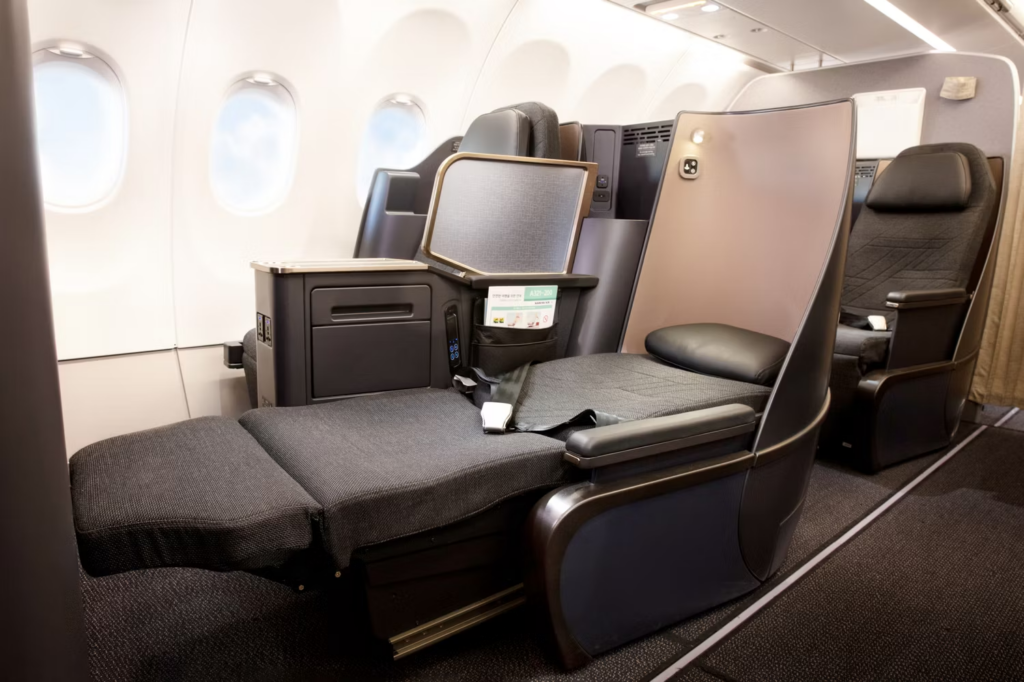Vietnam will be the first location in Southeast Asia where Korean Air will begin operating its new Airbus A321neo aircraft after the company made the announcement earlier this week. One of Korean Air’s most popular routes in Southeast Asia, which is Seoul to Ho Chi Minh City in Vietnam, will begin using the A321neo on Monday, May 1st.
From Seoul Incheon International Airport (ICN), Korean Air operates three flights each day to Ho Chi Minh City. These flights are the KE469, KE475 and KE477. On flight KE469, which takes off from Seoul Incheon Airport at 09:05 and lands at Tan Son Nhat International Airport (SGN) in Ho Chi Minh City at 12:40, the Airbus A321neo will be put to use. The flight will last around five hours. Flight KE470, which is a return trip, leaves San Francisco at 13:55 and arrives in Seoul at 21:25 local time.

Currently, a Boeing 737-800 is used to provide this service; however, commencing on Monday after the next, it will be replaced by an Airbus A321neo. The departure of KE475 takes place at 19:10 and is handled by a Boeing 777-300ER. The departure of KE477 takes place at 20:05 and is managed by an Airbus A330-300. This tactic is heavily pushed by Airbus in the direction of its Asian customers.
Why would you choose to fly with an A321neo on this route?
The A321neo aircraft operated by Korean Air (Korean) features 182 seats arranged in a two-class layout. There are eight seats in the fully-flat Prestige Class and 174 seats in the economy cabin. This is the first narrow-body aircraft in Korean’s fleet to offer seats in business class that recline all the way to a completely flat position.
They come equipped with a personal monitor of 17 inches (44 cm) in size for audio/video on demand IFE as well as a wireless smartphone recharging.
In addition, Korean Air was the very first airline in Asia to install the Airspace cabin on an A321neo aircraft. The experience that passengers have onboard any Airbus aircraft, whether it be an A350, A330, or A320-family aircraft, will be replicated in the airspace accommodations.

This includes both the good and the bad. The overhead bins in Korean Air’s Airspace cabin are forty percent larger than those of other A321neos, and the cabin’s one-of-a-kind and fully configurable lighting system is meant to provide the ideal ambiance for each stage of the journey, whether passengers are boarding the aircraft, eating, or sleeping.
The market that encompasses both Korea and Vietnam is a lucrative one.
When compared to the same period in 2022, the first three months of 2023 will see approximately thirty times the number of international tourists arriving in Vietnam. With 811,000 visitors during the first three months of this year, South Korea was the most important source of tourists from other countries, accounting for thirty percent of the total. Kyeyong Kim, who is working as the Director of Sales for Korean in Ho Chi Minh City, said:
“Vietnam is a growing market for Korean Air and remains one of our most important markets. Many Korean and foreign companies have been investing in Vietnam, fuelling demand for business travel.
“Vietnam is an important inbound market for Korean Air, but also a significant outbound market because many people travelling from Vietnam fly to North America and elsewhere on Korean Air via our hub in Seoul Incheon.”
By the year 2027, Korean will have purchased a total of thirty A321neos, all of which will be used for service on routes that originate in Korea and head to Japan, China, and Southeast Asia. In addition to being a founding member of the airline alliance SkyTeam and a joint venture partner of Delta Air Lines, the airline operates its fleet of 156 aircraft to provide service to 120 destinations throughout 43 countries.

